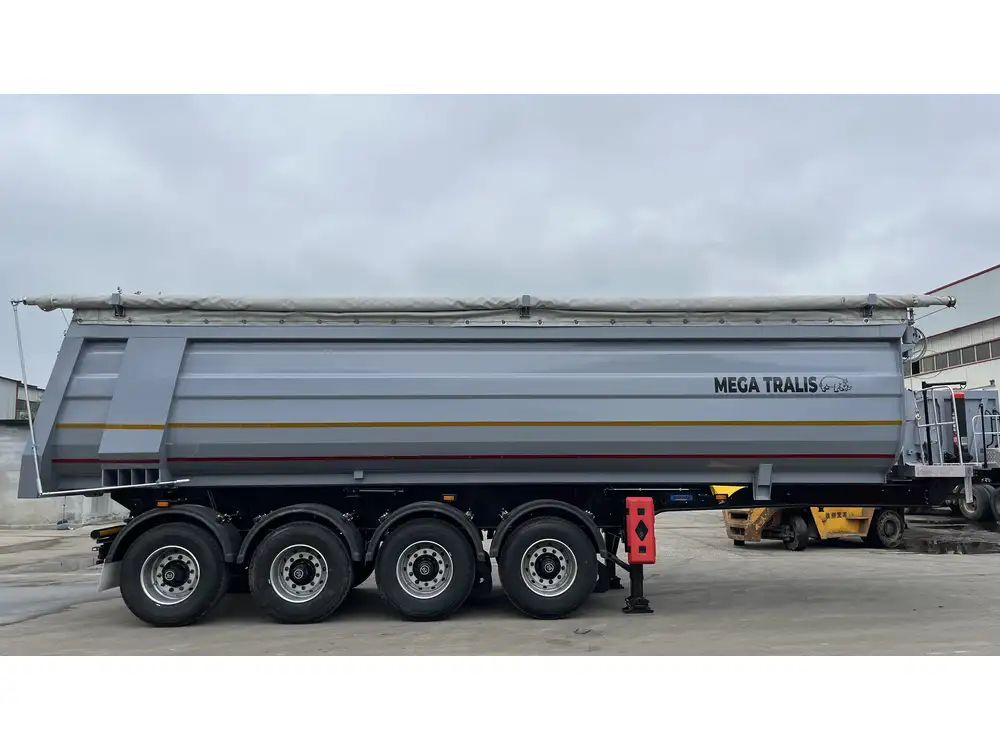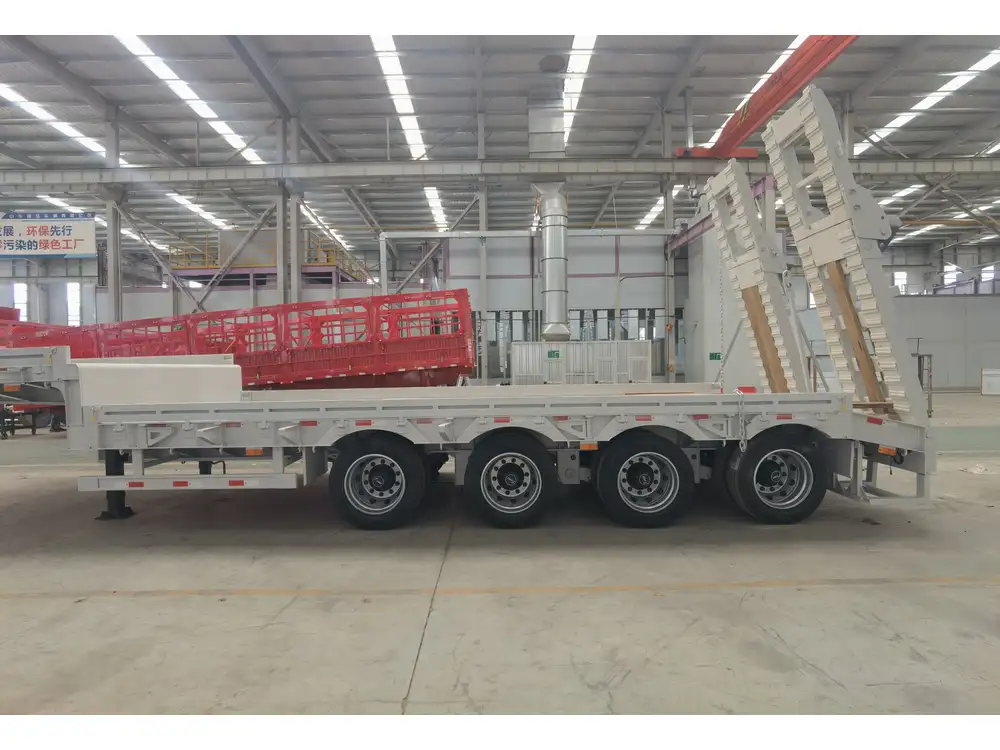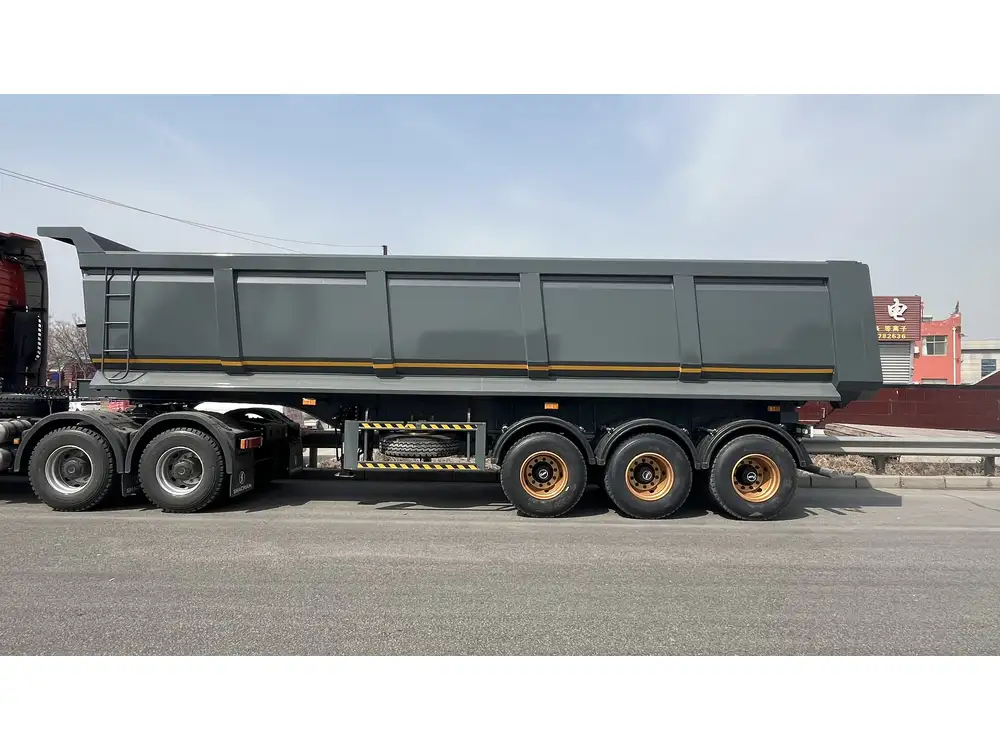When it comes to efficient transportation and unloading of materials, dump trailers have transformed the landscape of industrial and commercial operations. This versatile piece of equipment has become a staple across various sectors, ranging from construction to agriculture, thanks to its functionality and ease of use. In this article, we delve deeper into what dump trailers are, their construction, operational mechanisms, and their myriad applications.
What is a Dump Trailer?
Essentially, a dump trailer is a type of trailer that is specifically designed to transport bulk materials such as soil, gravel, sand, and construction debris. The hallmark feature of a dump trailer is its hydraulic system that allows for tilting, facilitating the unloading process by dumping the contents from the rear or the side.
Key Features of Dump Trailers
| Feature | Description |
|---|---|
| Hydraulic Lift System | Enables the trailer to tilt, providing an efficient unloading method. |
| Material Construction | Typically made from heavy-duty steel or aluminum, ensuring durability. |
| Payload Capacity | Ranges from 5,000 to over 15,000 pounds, depending on the model. |
| Axle Configuration | Options include single or tandem axles for enhanced stability. |
| Tipping Mechanism | Dependent on either front or rear hinges for ease of unloading. |

Types of Dump Trailers
Not all dump trailers are created equal. Based on design and operational mechanisms, they can be broadly classified into several types:
1. Standard Dump Trailers
These are the most common type of dump trailers, which feature a rectangular bed and are available in various sizes. Their simplicity makes them ideal for a wide range of applications, particularly in construction sites.
2. Low Profile Dump Trailers
Designed for easier loading, low profile dump trailers have a lower cargo bed height, making them suitable for tasks requiring minimal height constraints. They excel in urban environments where overhead clearance is a concern.

3. Side Dump Trailers
Distinct from the conventional rear dumping style, side dump trailers utilize hydraulic systems that allow for unloading on either side. This feature makes them particularly advantageous for projects where space is limited.
4. End Dump Trailers
As the name suggests, end dump trailers are designed to unload their material from the rear. This design maximizes capacity and allows for quicker unloading, making them popular in situations where efficiency is critical.
The Mechanics of Dump Trailers
Understanding how dump trailers operate provides insights into their functionality and advantages.

Hydraulic System
At the heart of any dump trailer lies its hydraulic lift system. This system typically consists of a hydraulic pump, cylinder, and lift arm. When the operator activates the hydraulic mechanism, fluid is pumped into the cylinder, pushing the piston and tilting the trailer bed.
Tipping Action
The tipping action can be controlled by the operator through a remote or an in-cab lever, providing flexibility and safety. The angle at which the trailer dumps is crucial for effective unloading, which can be adjusted based on the material type and job specifications.
Applications of Dump Trailers
The prowess of dump trailers extends to numerous fields, facilitating diverse operations.

1. Construction
In construction, dump trailers are invaluable for transporting materials like concrete, sand, and debris. Their ability to unload quickly and efficiently transforms job site workflows, enabling contractors to stick to timelines and budget constraints.
2. Landscaping
Landscapers utilize dump trailers for transporting earth, mulch, and decorative stones. Their versatility allows landscapers to improve the aesthetics of properties while ensuring efficient material handling.
3. Agriculture
Farmers often rely on dump trailers for hauling agricultural products, whether it’s grains, fertilizers, or compost. The trailers make it easier to manage bulk materials, thus enhancing productivity.

4. Waste Management
In the realm of waste management, dump trailers are employed to transport garbage and other debris to disposal sites. Their robust design and volumetric efficiency make them ideal for this purpose.
Factors to Consider When Choosing a Dump Trailer
Selecting the right dump trailer is an essential decision that can significantly impact operational efficiency. Here are the prominent factors to weigh:
Payload Capacity
Evaluate the maximum weight you intend to carry. Different trailers come with varying payload capacities, which can affect performance and regulation compliance.

Material Type
Consider whether you need a steel or aluminum trailer. Steel offers robustness, whereas aluminum is lightweight and resistant to rust—a crucial factor depending on your operational context.
Suspension System
Good suspension systems can mitigate road shock and enhance towing stability. Examine axle configurations and weigh options between single or tandem axles.
Bed Size
Choose a bed size that suits the materials you will transport. A larger bed allows for more significant loads but may be harder to maneuver in tighter spaces.

Hydraulic System
Investigate the type of hydraulic system used in the trailer and its lifting capacity. A quality hydraulic system can ensure consistent operation and longevity of the trailer.
Design and Features
Consider additional features such as side access doors for easier material handling, tarp kits for material protection, and reinforced beds for heavier loads.
Maintenance of Dump Trailers
Routine maintenance is pivotal in prolonging the lifespan of dump trailers. Regular inspections and servicing should include the following:

Hydraulic System Check
Monitor the hydraulic fluid levels and inspect hoses and connections for leaks. A well-maintained hydraulic system ensures operational reliability.
Structural Integrity
Regularly examine the trailer for signs of wear and tear, particularly on the chassis and bed. Addressing minor issues can prevent more significant damage.
Tire Maintenance
Inspect tires for wear, ensuring proper inflation levels to promote safety and fuel efficiency during transport.

Lubrication
Frequent greasing of moving parts will help maintain their functionality and reduce the potential for breakdowns.
Brake Inspection
Regular checks on braking systems are crucial for safe operation, particularly when transporting heavy loads.
Conclusion
Dump trailers are an indispensable asset across multiple industries, providing a combination of robust transportation capabilities and convenience. From construction to waste management, these trailers enhance productivity and operational efficiency. By understanding the different types of dump trailers, their mechanisms, applications, and maintenance needs, users can make informed decisions that enhance their work processes and ensure the longevity of their investment.
As we pave the way into a future dominated by efficient logistics and sustainable practices, the importance of tools like dump trailers cannot be overstated. Whether you’re a contractor, landscaper, or farmer, recognizing the value that dump trailers bring to your operation can lead to notable improvements in workflow and efficiency. Emphasizing meticulous selection, maintenance, and operation will not only benefit individual projects but will also elevate the standards of quality and performance within your industry.



